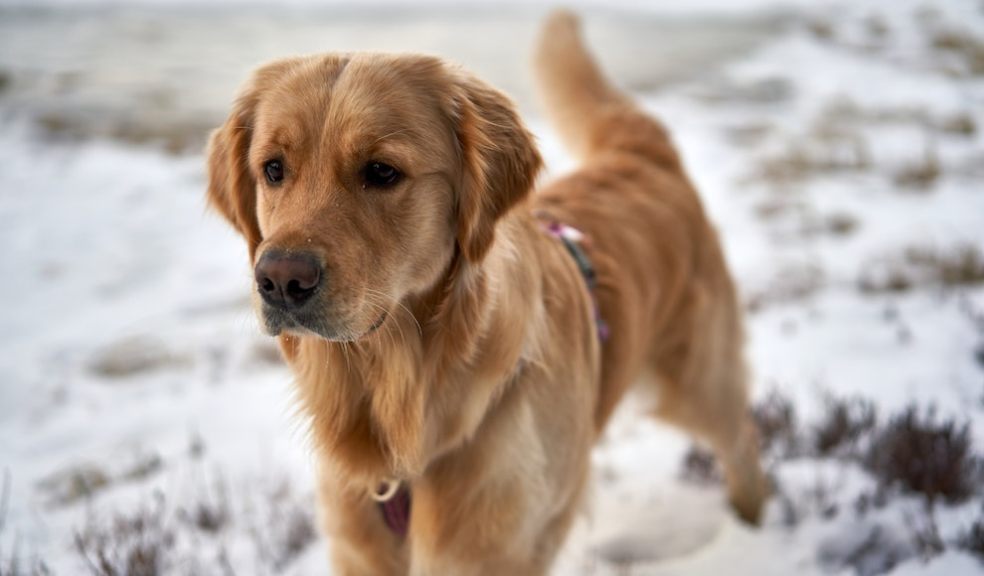
10 things you need to consider when walking your dog in the snow, according to an expert.
If your area is currently covered in snow (most Brits are sharing snaps of their icy streets on Instagram!) and you’re a dog owner, then there are things you need to do to keep your pooch safe on walks this winter. Whilst you wrap up warm, the needs of man’s best friend shouldn’t be underestimated!
Anna Bain, a dog wellbeing expert from ProDog Raw, is now sharing her expertise, outlining the things you should and shouldn’t be doing when walking your dog in the snow.
- Make sure it’s not too cold to be walking your dog
‘Whilst winter months are notoriously cold, it’s important to remember that they can be too cold for certain dogs. Of course, this depends on the breed of your dog; small breeds, those with less body fat and some single coated breeds should be limited to shorter walks (less than 20 minutes) in freezing temperatures. Meanwhile, dogs should never be left outside if the temperature significantly drops. Every dog is different, make sure you research the breed in relation to colder weather, and always pay close attention to your own dog’s reactions and limitations.’
- Think about when you’re walking them
‘When it’s snowing outside, or if it’s particularly icy, it’s worth planning when you’re walking your dog more carefully; especially if your dog is not designed for cold weather. Early morning and late-night walks will be colder; if you can, walk your dog a little later in the morning and in the afternoon when temperatures are slightly warmer.’
- Only walk safe routes
‘During snowy and icy weather, stick to busier areas – if you or your dog fall over, it’s important that help is nearby. Similarly, pavements and dedicated walking trails should be maintained well, making them safer routes.
Most importantly, avoid walking through built-up snow with your dog, as this can clog in their fur and make them too cold. Clear paths are ideal – especially for smaller dogs who are closer to the ground.’
- Keep an eye on your dog if they’re eating snow
‘Eating small amounts of natural snow is safe for dogs but as an owner you need to be vigilant. Keep your dog’s snow eating confined to areas where you know what’s in it. For example, very fresh snow in your garden. If your dog is eating snow in a public place, it could contain de-icers or rock salts which are poisonous and extremely harmful for dogs.’
- Make sure their toe hair is clipped
‘During cold weather it’s important that the hair between your dog’s toes is clipped short. Ice and snow can build-up in this hair, making it difficult and sometimes painful for your dog to walk. This can also help to prevent their fur from getting matted and uncomfortable during cold weather.’
- Moisturise your dog’s paws.
‘Dogs’ delicate skin can become dry and sore just like ours. After a walk, when you’ve gently cleaned your dog’s paws, I would recommend moisturising them with a pet-safe dog skin conditioner or moisturising oil to keep them smooth and comfortable. For example, coconut oil is a great choice.’
- Keep them away from antifreeze.
‘Antifreeze is extremely toxic for dogs; it contains a chemical called ethylene glycol which is broken down in the body. This can bind to calcium and make crystals that form deposits and damage different parts of the body, including the lungs, brain, and kidneys. Antifreeze commonly causes fatal kidney failure and as dogs like its taste, this is a hazard that owners need to be acutely aware of.’
- Consider wearing reflectors
‘Snow often leads to foggy weather, whilst there’s naturally less sunlight in the winter, meaning passers-by might struggle to see you and your dog. You can consider investing in reflective collars, leads, or harnesses to help keep your dog safe.’
- Watch for frostbite
‘Frostbite is a danger that can significantly harm dogs. Frostbitten skin is typically cold, pale, stiff, and turns red when it warms. It’s important that the area is kept warm if you think your dog has frostbite – and don’t let them chew or lick it. Of course, if you have any concerns, you should always consult a vet.’
- Make sure they don’t overheat
‘Dogs can overheat in the cold – yes, overheat. If you’ve taken your dog for a walk in the snow and they warm up too quickly when they get home, this can make them unwell. You might see your dog looking lethargic, or you could see vomiting and confusion. In any instance, speak to an expert.
To avoid your dog overheating, make sure you’re not walking them in extremely cold temperatures and help them slowly warm up after being outside.’



















